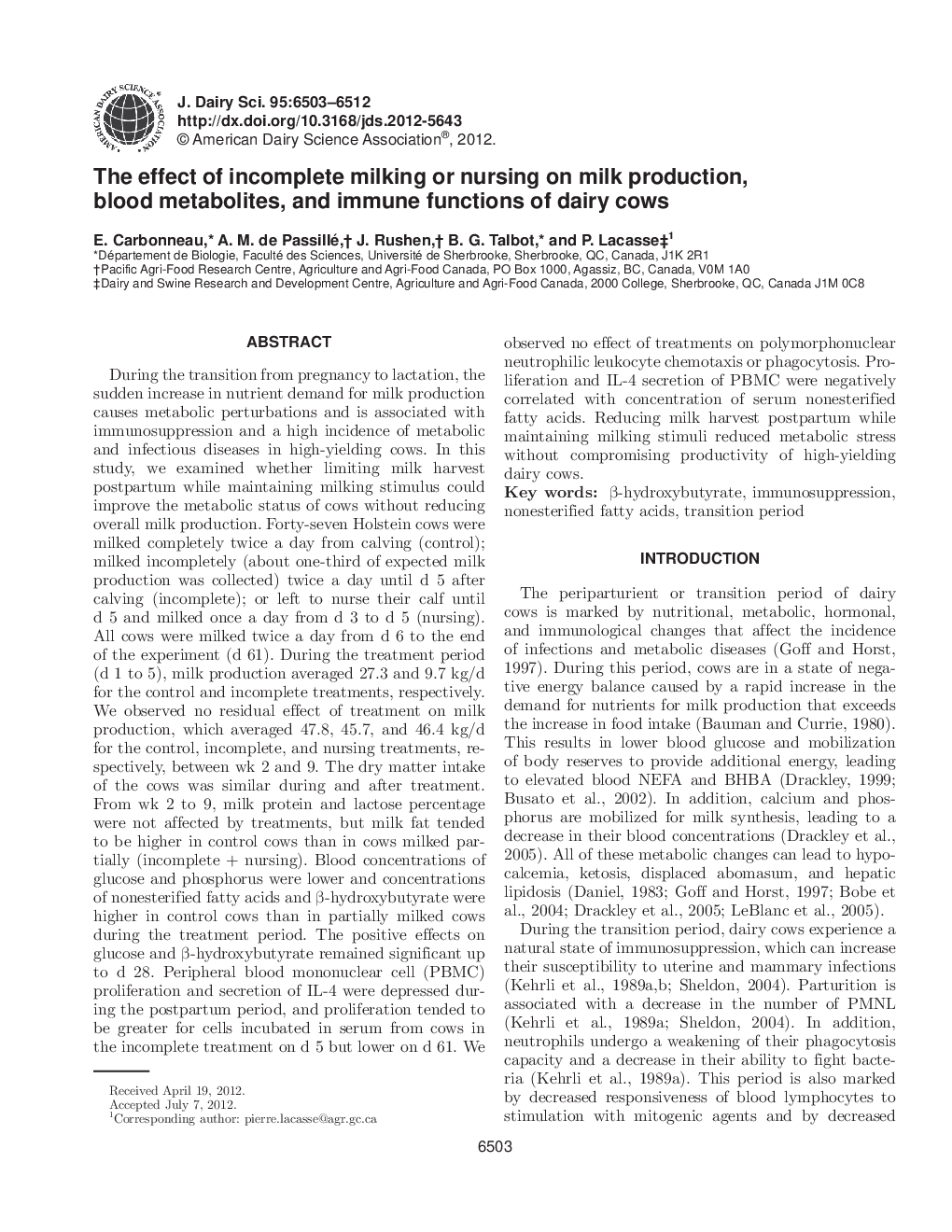| Article ID | Journal | Published Year | Pages | File Type |
|---|---|---|---|---|
| 10979533 | Journal of Dairy Science | 2012 | 10 Pages |
Abstract
During the transition from pregnancy to lactation, the sudden increase in nutrient demand for milk production causes metabolic perturbations and is associated with immunosuppression and a high incidence of metabolic and infectious diseases in high-yielding cows. In this study, we examined whether limiting milk harvest postpartum while maintaining milking stimulus could improve the metabolic status of cows without reducing overall milk production. Forty-seven Holstein cows were milked completely twice a day from calving (control); milked incompletely (about one-third of expected milk production was collected) twice a day until d 5 after calving (incomplete); or left to nurse their calf until d 5 and milked once a day from d 3 to d 5 (nursing). All cows were milked twice a day from d 6 to the end of the experiment (d 61). During the treatment period (d 1 to 5), milk production averaged 27.3 and 9.7 kg/d for the control and incomplete treatments, respectively. We observed no residual effect of treatment on milk production, which averaged 47.8, 45.7, and 46.4 kg/d for the control, incomplete, and nursing treatments, respectively, between wk 2 and 9. The dry matter intake of the cows was similar during and after treatment. From wk 2 to 9, milk protein and lactose percentage were not affected by treatments, but milk fat tended to be higher in control cows than in cows milked partially (incomplete + nursing). Blood concentrations of glucose and phosphorus were lower and concentrations of nonesterified fatty acids and β-hydroxybutyrate were higher in control cows than in partially milked cows during the treatment period. The positive effects on glucose and β-hydroxybutyrate remained significant up to d 28. Peripheral blood mononuclear cell (PBMC) proliferation and secretion of IL-4 were depressed during the postpartum period, and proliferation tended to be greater for cells incubated in serum from cows in the incomplete treatment on d 5 but lower on d 61. We observed no effect of treatments on polymorphonuclear neutrophilic leukocyte chemotaxis or phagocytosis. Proliferation and IL-4 secretion of PBMC were negatively correlated with concentration of serum nonesterified fatty acids. Reducing milk harvest postpartum while maintaining milking stimuli reduced metabolic stress without compromising productivity of high-yielding dairy cows.
Related Topics
Life Sciences
Agricultural and Biological Sciences
Animal Science and Zoology
Authors
E. Carbonneau, A.M. de Passillé, J. Rushen, B.G. Talbot, P. Lacasse,
